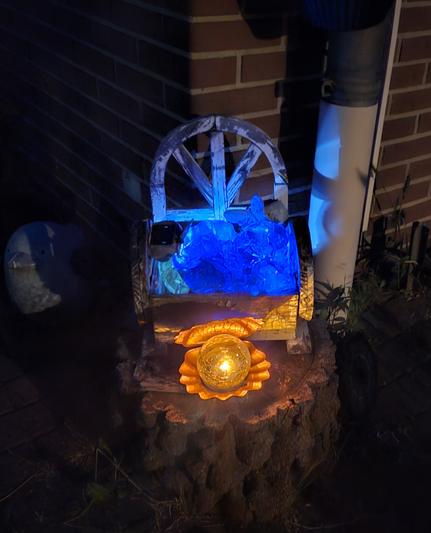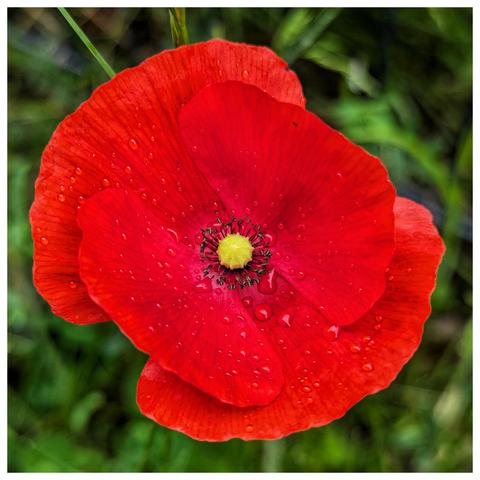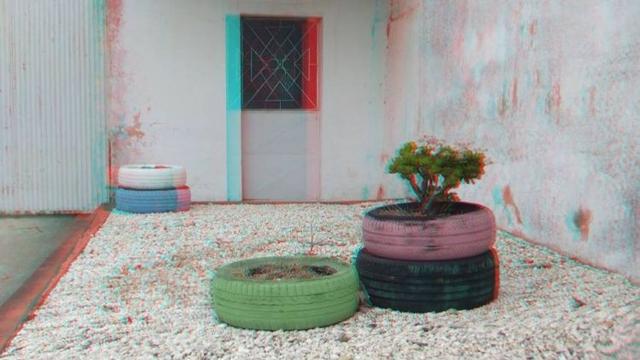#ComplementaryColours
#Lights #Orange #Blue #FairyLights #Garden #Decoration #Beleuchtung #Deko
Na toll, gerade hab ich eine blau-gelbe Fuggerei-Tür für den Doorsday gepostet ... 🙄 Dann gibt es jetzt eben Rot-Grün // Great, I just posted a blue and yellow Fuggerei door for Doorsday ... 🙄 Here's red and green instead
#complementaryColors #Mohn #Mohnliebe #Mohntag #poppy #poppies #waterDroplets #waterdrops #rainDroplets #raindrops #Wassertropfen #Regentropfen #Blume #flower #bloomScrolling
‘Sunlight in the Blue Room’ is an 1891 painting by Anna Ancher, an innovative Danish painter who was a central figure with the Skagen Painters. With its many shades of blue and the sunlight pouring through the window, the painting is one of her most famous works.
Those shadows cast by the foliage in the window are very evocative for me. The painting reminds me of summer afternoons at my grandparents’ farm. Some of my yesterdays.
Lens-Artists Challenge #333: Complementary Colours
This week Egídio from Capturing My World Through Brazilian Eyes is hosting the Challenge, and his theme for the week is ‘Complementary Colours‘. ‘Are we ready to have more fun with colors?’ he asks. ‘Let’s … see how we can paint with our cameras and get photos that pop. All you need is to be familiar with complementary colors.’
https://upload.wikimedia.org/wikipedia/commons/b/bc/RGB_color_wheel.png
Complementary colours are those colours that sit roughly opposite on the colour wheel, which in turn is ‘an abstract illustrative organization of colour hues around a circle, which shows the relationships between primary, colours, etc.’ As Egídio observes, ‘Using [complementary colours] in your photography creates the best color contrast, and your images pop.’ But which colours are considered complementary? According to Wikipedia this depends on the colour model being used. ‘Modern colour theory uses either the RGB additive colour model or the CMY subtractive colour model, and in these, the complementary pairs are red–cyan, green–magenta, and blue–yellow.’
For my submission to the Lens-Artists Challenge this week, the complementary colours that I’ll concentrating on is the red-cyan combination, and one particular use of this combination, the red/cyan anaglyph. Stereoscopy, or ‘seeing’ three dimensional depth from a two dimensional image, has been around longer than photography itself. It was first postulated in the early 19th century, and after the invention of photography as a technique was popular until the mid-20th century, at least.
The Lomo Sputnik, a Soviet stereo camera from (I think) the 1960s.Stereo, or 3D photography works by having a camera with two lenses, spaced roughly 6cm apart, that can take two images at the same time. These can be viewed side-by-side with a stereoscope, as an animated ‘wiggle’ GIF file, or with special red/cyan stereo glasses as an anaglyph. There is a slight parallax difference (the distance between the lenses) between the two images, and the 3D effect of the anaglyph is achieved by ‘encoding each eye’s image using filters of different (usually chromatically opposite) colors, typically red and cyan.’ (Wikipedia) … When viewed through the glasses, the brain reconstructs the anaglyph as a three-dimensional image.
Until the late noughties, all stereoscopic photography was analogue, although you could create an anaglyph from scanned images in PhotoShop. But around 2010, with the advent of 3D TVs and the release of some films in 3D, a few manufacturers, FujiFilm and Panasonic among them, released 3D digital cameras onto the consumer market.
I’ve been lucky enough to get my hands on the Fujifilm Finepix Real 3D W3 (that’s really it’s full title, quite a mouthful for sure). It’s been a bit of a task to learn how to make stereoscopic images, and I’m not really sure that I have the technique properly refined yet, but I’m getting there. To make a 3D image for presentation I use the free program Stereo Photo Maker (SPM), which will automatically make stereoscopic images from the raw MPO file that the W3 uses, including the digital anaglyph.
Of course, the chances are that you won’t have any red/cyan stereo glasses around to view the images properly (for the record, I don’t) but at least I hope that you will like the images that I have created. If it helps, I’ve also added a couple of wiggle GIFs of the images to give some idea of what they should look like.
As a bonus, of sorts, I’ve also attached a ‘double exposure’, which I think is what happens when you load a JPG file into Stereo Photo Maker. I’m still not sure how this came about, but I really like it. Also included is what happens when you try intentional camera movement with the W3, and an anaglyph made from that.
Next week, Tina will host the Challenge, so hope that you can join us then. Themes for the Lens-Artists Challenge are posted each Saturday at 12:00 noon EST (which is 4pm, GMT) and anyone who wants to take part can post their images during the week. If you want to know more about the Challenge, details can be found here, and entries can be found on the WordPress reader using the tag ‘Lens-Artists’.
If you are on Mastodon, you can now follow this blog directly. Just go to Mastodon and follow the ‘Snapshot’ WordPress account at @keithdevereux.wordpress.com. All new posts will be automatically updated to your timeline.
#Anaglyph #AnimatedGif #Challenge #ComplementaryColours #Crossview #Experimental #FinepixW3 #LensArtists #Real3D #Stereo3D #Stereography #StereoPhoto #Stereoscopy #LensArtists
An other picture for this week's #52frames challenge...
#52frames_complementarycolors
#52weekphotochallenge
#photography
#foto
#lego
#skateboard
#yellow
#violett
#productphotography
#complementarycolours
Mein ColourfulMuesli hat jetzt auch ein Logo bekommen. Mueslis nach Farbharmonie✌️😁. Mehr auf Instagram #ColourfulMuesli
#Farbharmonie #complementarycolours #colours #food #Frühstück
https://instagram.com/colourful.muesli?utm_source=qr&igshid=MzNlNGNkZWQ4Mg%3D%3D
Ah, a found shot for last week's 52 Frames. Spring is coming to the allotment and the crocus are blooming.
The obvious ending to the soup bowl series ... it was just my lunch after all.
Another blue bowl/orange soup shot for #52Frames
52 Frames prompt this week was complementary colours. Plan A feel apart, and I should not have been surprised, when the blue eggs I ordered were subsituted for brown eggs. Imagine expecting to be able to get the eggs I ordered, what did I think this was? 2015?
Anyway, failing that I went with my lunch. Orange tomato soup in a blue bowl.
#52Frames #ComplementaryColours #TomatoSoup #Orange #Blue #photography #ArtReference #FoodPhotography



